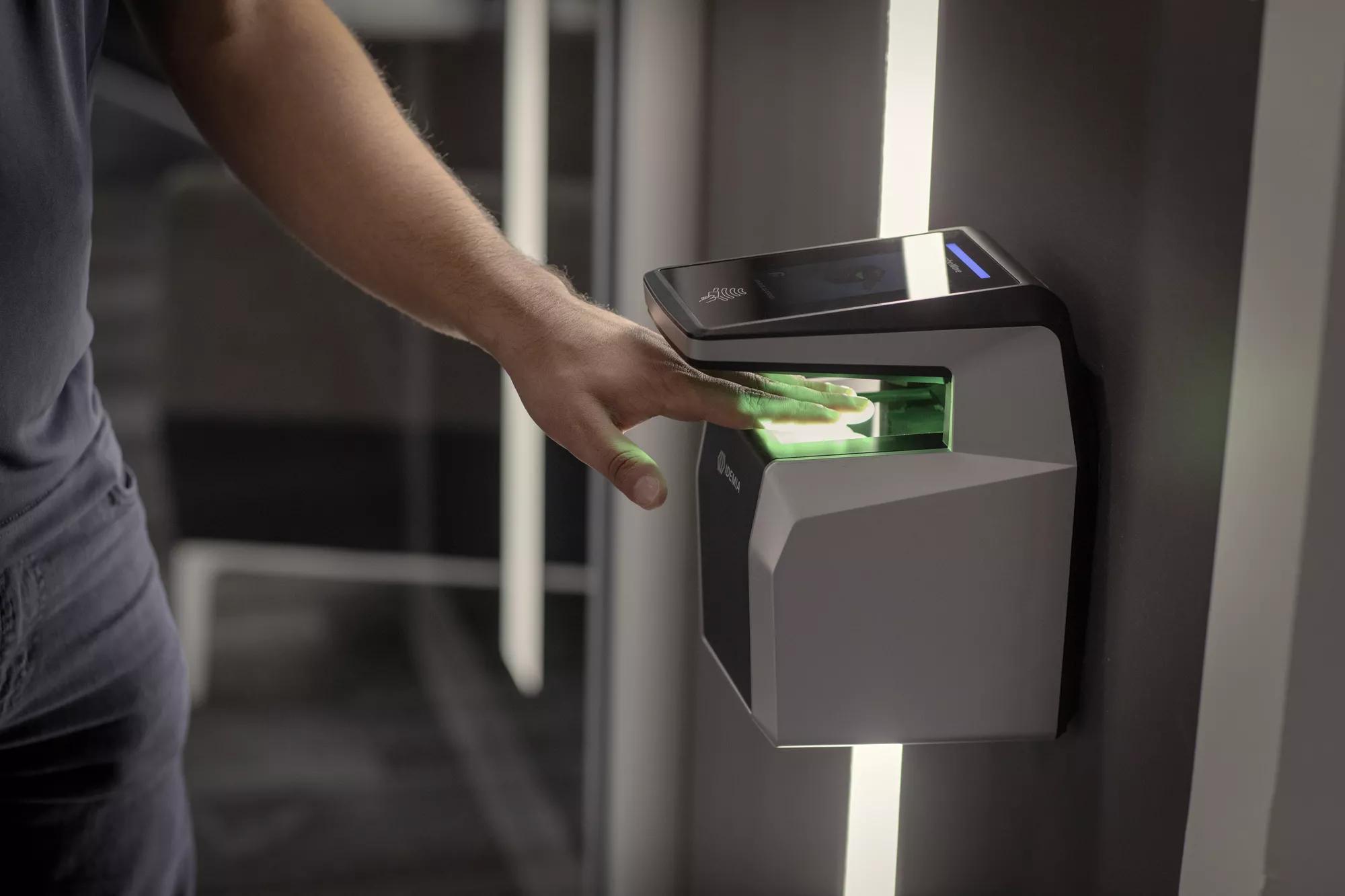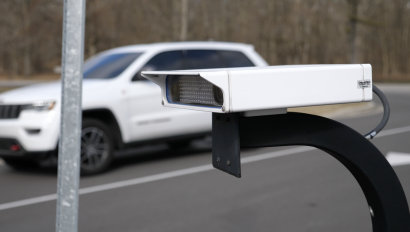Commercial Security Systems: What Are They, and What Should They Include?

A balanced approach to security is integral to safe, secure, and efficient business operations. However, several factors can jeopardize a security system's integrity. This is especially true for larger enterprises, which typically boast a more complex physical facility footprint and therefore require a more integrated approach to security.
Due to their complex operating needs, many large enterprises have adopted commercial security systems to address security threats. These systems protect your people, assets and physical premises from various risks, including theft, vandalism, improper visitor access and fire. Implemented correctly, these technologies connect and integrate with your existing security ecosystem for scale, efficiency and control, optimizing your response protocols during emergencies and therefore bolstering your security posture as a whole.
What should a commercial security system look like in your organization? The answer will vary based on many factors, including the nature and size of your business, location, assets and identified threats. Commercial systems should span many protective measures, from video surveillance and artificial intelligence (AI)-enabled cameras to biometric-based access control and more sophisticated options like integrated emergency response plans.
Let’s discuss how these offerings — among many others — can bolster your company’s security posture and operational efficiency.
The benefits of adopting a commercial security system
The most critical benefit of a commercial security system is heightened safety for your people and assets. These systems provide more effective protection by employing cutting-edge technologies to anticipate and neutralize threats.
Additionally, a cohesive commercial security system provides enterprises with crucial consistency. Consistency helps ensure your people are safe, regardless of their location. Imagine a commercial enterprise with varying facilities, from warehouses and production facilities to retail locations and data rooms. What is the floor plan and operation of each location? How is each facility staffed during off-hours? The answers to these questions and many more should influence each unique space's strategy. When building a commercial security system, leading partners like Securitas Technology review individual facility needs alongside organizational requirements and local regulations to craft an informed strategy. Advanced business security systems also offer an improved approach to innovative security. Rather than relying on piecemeal upgrades, leading commercial systems leverage AI and cloud technology to make real-time solution improvements. This capability ensures organizations remain ahead of bad actors and any emerging threats.
Finally, commercial security systems boost interoperability, enabling your technologies to interact seamlessly. This feature is vital because laggard technologies may interfere with a system's communication ability. Moreover, integrated security solutions dismantle silos by ensuring all technologies — and staff members — operate on the same information.
How to implement a comprehensive security solution
Commercial security solutions should be tailored to your organization's operational and security needs. However, you can expect the following solutions to be included in any large-scale security ecosystem.
1. Access control
Access control systems determine the three W’s of visitor entry: who, when and where. They help protect your enterprise from unauthorized entrants, ensuring your people, data and assets are always safe.
These systems are capable of more than simply locking and unlocking doors. Leading partners like Securitas Technology will provide various advanced control systems, including:
-
Cloud-based access control — By maintaining visitor and authorization information in the cloud, clients attain better flexibility, scale and reliability. Cloud-based access control systems enable administrators to manage authorizations from anywhere and can curb server-related costs.
-
Biometric and facial recognition — Hands-free access control is skyrocketing in popularity as leaders realize the improved efficiency and security these capabilities provide. Biometric and facial recognition systems allow authorized users to enter privately without worrying about physical credentials.
-
Mobile credentials — Perhaps the most popular access control solution in recent years, mobile credentialing reduces dependencies and physical credentialing needs by relying on mobile apps or scanned QR codes to check in and out of sensitive areas. Mobile access control provides fast and convenient access for users while bolstering security.
In addition, access control systems can offer valuable insights that drive operational efficiency. When equipped with AI and machine learning, these systems collect and catalog detailed audit trails and visitor reports. For example, an uneven traffic flow may indicate that greater staffing is required during peak hours.

2. Fire detection
Fire detection systems detect and respond to one of the most destructive forces that can arise in a contained environment. By swiftly detecting signs of fire, these systems are nothing short of life-saving.
In the context of a commercial security system, fire detection solutions do much more than sound an alarm. Fire-detecting systems can automatically and autonomously contact emergency responders when certain conditions are met.
Often, fire detection systems boast innovative technologies that help circumvent fire emergencies altogether. For example, Securitas Technology’s aspirating smoke detection systems are designed for critical environments where very early detection is paramount. These highly sensitive systems draw air samples through a network of pipes to detect smoke as early as possible.
3. Intrusion detection
Much like fire detection and access control systems, intrusion detection will look different in every organization. However, all intrusion solutions share a commonality: They safeguard your enterprise against dangerous unauthorized entry.
Advanced intrusion solutions include monitoring services that trigger an alert if glass is broken, breached or even touched; motion detectors that monitor for unexpected activity within a specified zone; and audio-based intrusion detection that flags when unexpected noises occur in protected areas.
Securitas Technology-provided intrusion detection systems can also decrease police response delays — by providing alarm verification services. Our alarm verification solutions use audio-based and/or video-based technology to confirm the authenticity of a threat, enabling first responders to understand the nature of an event before they arrive on the scene.
4. Video surveillance
Video surveillance technologies like closed-circuit television (CCTV) are integral to securing your physical assets, maintaining safety, and protecting privacy. Video-based surveillance enables leaders to monitor, record, and analyze activity both in real-time and retrospectively — granting invaluable access to information about who or what has entered your facility and when. Leaders can use this data to manage common security risks, deter further intrusion, and support external investigations as needed.
But leading video surveillance tech goes beyond these standard applications. The advent of AI-enabled surveillance has facilitated advanced analytics like object recognition, behavior analysis, and anomaly detection at scale. These functions flag when an unauthorized entry has occurred, allowing for proactive threat detection without invading the entrants' privacy. How? These systems focus on non-identifying information. For example, leaders can program information about authorized entrants into the system — say, all access to a building should be confined to individuals wearing orange high-visibility vests. With these protocols, the video system can flag when an individual not fitting this criterion enters the facility. AI can also enhance low-light imaging, providing clearer pictures in challenging visibility conditions.

Getting started on commercial security today
A comprehensive approach to business security solutions will always include systems related to access control, fire detection and intrusion detection. However, the particulars of each plan will depend on several organizational factors. Ideally, leaders should use this information as a guide and consider contacting a security expert to craft a specialized business plan.
Remember: The success of a commercial security system lies in its interoperability. When leaders integrate their existing security systems with video, access control, fire detection and intrusion detection systems, they create a comprehensive, interconnected security ecosystem — a vital component of any enterprise’s operations.























